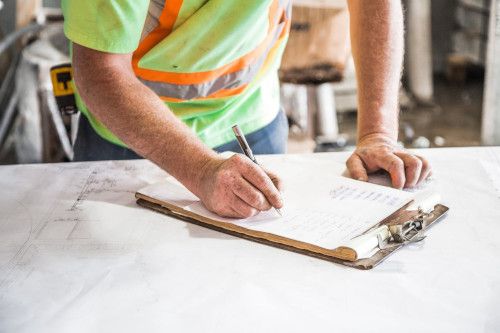'Lifesaving' Construction App Developed by 'Glasgow Caledonian University

A multimedia app that will reduce injuries and save lives on construction projects across the globe has been developed by researchers at Glasgow Caledonian University.
The project, led by GCU's Professor Billy Hare, has delivered an innovative application for architects and other designers to help them improve health and safety for construction workers, as well as the occupiers and users of buildings.
The app makes use of video and images that highlight particular health-and-safety issues pertinent to individual building designs.
Research into the app was funded by a '102,800 grant from the Institution of Occupational Safety and Health, the world's largest professional organisation for OSH practitioners.
According to IOSH, up to half of construction accidents in the UK have a connection to the design of the building. While researching the app, Professor Hare's team found it helped designers identify a greater number of hazards, such as welding fumes, emergency escape during a project's build phase, manholes in traffic routes and foyer-entrance slips.
Professor Hare, who is Professor in Construction Management in GCU's School of Computing, Engineering and Built Environment, said: 'Academics in the past have attempted to create systems that tell architects and designers the 'safest' design option, but this approach is too simplistic and those who make design choices don't work that way.
'We wanted to create a knowledge database that recognises there are many design options, and each has its own pros and cons when it comes to health and safety. Therefore, designers can make informed decisions.
'A key factor for this research was the visual nature of the digital app's content, which seemed to work best with new graduates. But its real potential lies in being able to capture knowledge from more experienced designers for the next generation to counter the age-old problem of 'organisational memory loss' and prevent the same old mistakes that cause accidents and ill health being repeated.
'We are now looking for partners to develop the prototype digital app for full-scale industry use.'
As part of the study, a sample of 40 designers from two typical industry groups of architects and civil engineers were recruited.
Half of the designers were randomly assigned use of the app. Participants were then asked to review a set of computer-aided design drawings, identify hazards and make decisions about design.
The experiment tested the app against general internet searches and examined the designers' ability to foresee hazards in designs by measuring both the quantity of specific hazards identified and the quality of resulting designs.
Using the app, the designers identified hazards a total of 599 times, with architects identifying over three times the number of hazards as those not using the app. For civil engineers the figure was five times as large.
In both cases the scope of hazards identified was double that of the group not using the multimedia app, suggesting it was an effective way of improving designers' knowledge of hazards.
Mary Ogungbeje, Research Manager at IOSH, said: 'Everyone would agree that it's always best to prevent an accident from taking place in the first place, rather than reduce the injury.
'In today's age of technology, being able to utilise digital training resources to help designers do just that is great. Such tools can make a real difference in upskilling professionals, irrespective of their level of experience. Architects and civil engineers can identify hazards and come up with better controls when developing and reviewing designs. Ultimately, this will reduce injuries and save lives.'

